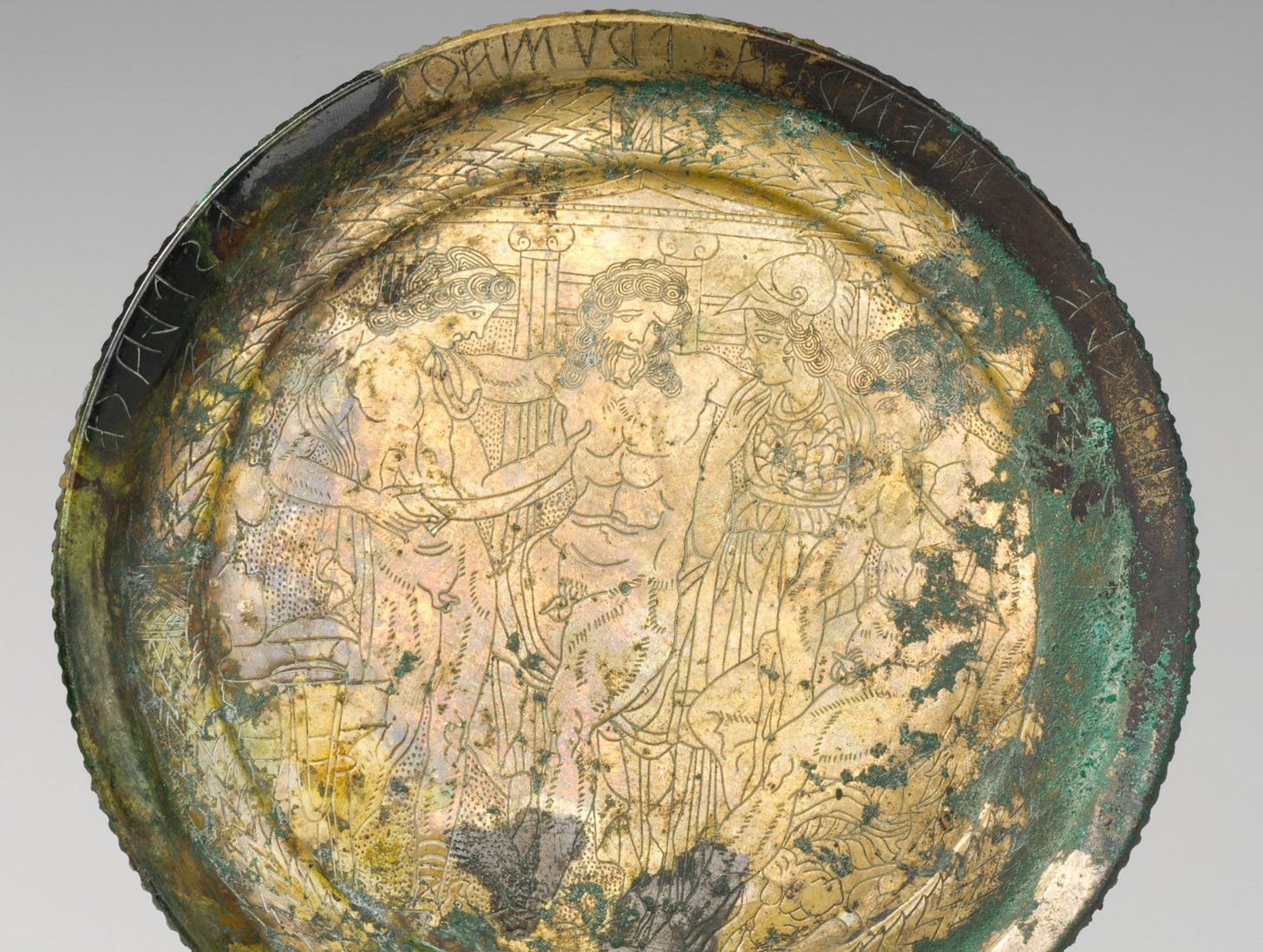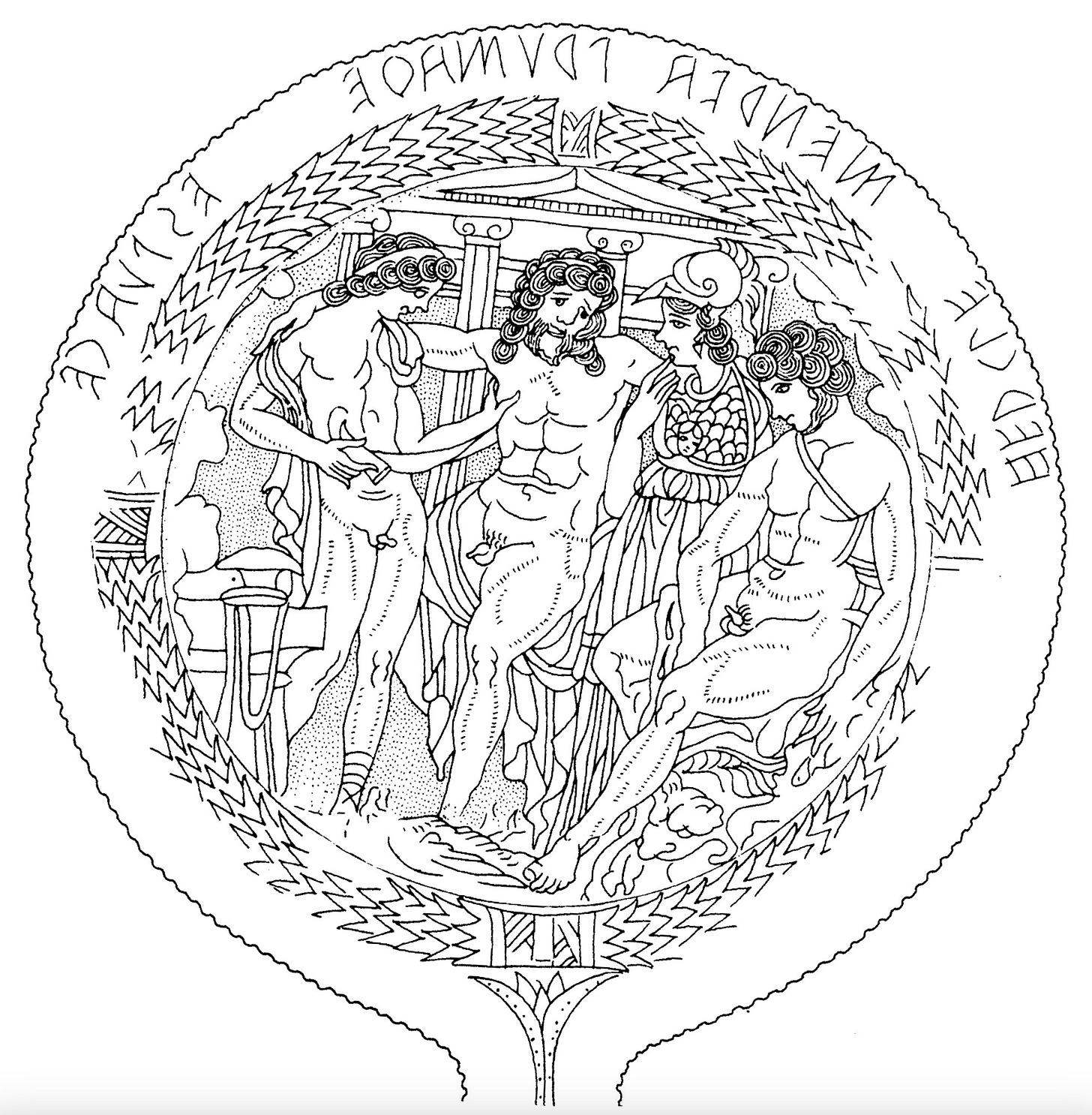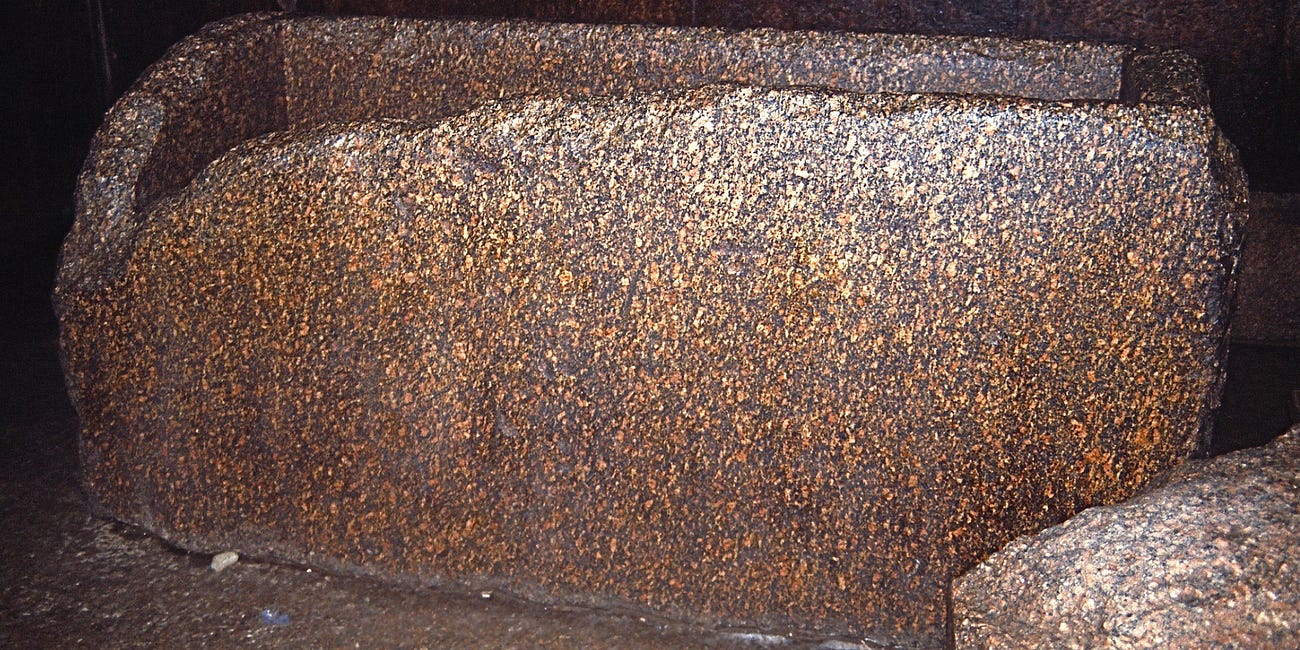Fresh Batch #181: The Radical Significance of the Horse: Caballus, Kybalion, Cybele & the Fingerprints of the Dorians
Marti Camulo, Greek Mythological Imperialism, Cuno Tascio, Turms Aita
Reminder: All articles can be listened to through the Substack app for those who don’t prefer to read. Also, if you have questions or ideas you’d like me to address about this article, feel free to post them in the Substack app. If I can, I’ll address it in a livestream on Substack.
Marti Camulo
Unfortunately, modern readers and researchers, the current technology is not programmed to satisfactorily map out ancient languages and help us identify citations. This is not a flex, but rather an example to illustrate how important it is to be able to read the different languages in their own alphabets. Bryant made one typo, which in this example, if you don’t chase down the actual work he cited, will return no results other than his text, making the reader or researcher less likely to depend on his work. One of my strengths is that I am not a casual researcher, and my audience knows they can depend on my findings and conclusions being in the historical record.
Bryant accidentally recorded Κωχώμην (Kochomen) as Κοχωνην (Kochonen) in his research, which then led him to make somewhat erroneous etymological claims, (Analy. Anc. Myth. p. 103.), “It is remarkable that Syncellus, speaking of Venephres King of Egypt, says, that he built the pyramids of Cochone (Sycellus. p. 55.); which before him had taken notice of the same history:
The problem with this is I cannot return search results even if I use his mistaken Greek, nor can I return results by typing in the transliteration of it in Latin letters. I was only able to notice this because I’ve done the work and can read Greek. These little subtleties are what make people like me irreplaceable, and I hope to impart that ethic on you so that you become irreplaceable in whatever region you’re in.
He continued (Ib. pp. 103-4.), “Now Co-Chone, analogous to the Beth-El, Beth-Shan, Beth-Dagon, signifies the temple of the Deity; the house of the great king, or ruler: for such is the purport of Con, and Conah.”
Even though this is an error, he may still be correct in his general assessment. It’s not a big deal to me. But what is interesting is that he claimed Hercules was the chief deity of Tyre, the so-called capital of Phoenicia. This would demonstrate that the archetype was not of Greek origin. If my conclusions are correct, that the Phoenicians are the Vetulonian navigators, or some other Etruscan offshoot, then it’d support the archetype of Hercules originating from the Etruscan Hercle, which would further support the subsequent origin of Ogmius from this Etrusco-Phoenician system, which I suspect is merely Etruscan.

Bryant wrote (Ib. p. 104.), “Hercules, the chief Deity of Tyre, and who was also highly reverenced in Egypt, was styled Con.”
This would be a philological link to Cunobelinus (Lord-Cuno; Cuno-Baal), whose name is abbreviated CVNO on ancient coins found in Britain. On the reverse, we see an Etruscan sphinx with the word TASCIO written on it, or it could be a mistake and it was supposed to read TVSCIO. This is a big difference. The subject does not seem to be conclusive. The explanations for the meaning of TASCIO, which may be TUSCIO, are also speculative, as seen in Errors Respecting the Coinage of the Ancient Celtic Kings of Britain. It’s important to remember that words can change meaning over time depending on context. For example, we hear the word virtuoso now and think highly skilled or gifted artists, but this word originally signified one who showed courage and virtue on the battlefield. Perhaps tascio once meant something bold, ascribed to explorers who conquered hostile lands, which required a degree of barbarity. Food for thought.
The following is William Betham’s explanation of Tascio/Tascia.
Since it is not conclusive, and I am not satisfied with the claim of it signifying Tasciiovani, I’d like to add my speculation. There are various Latin spellings of Etruscan. They called them Tusci (Tuscans), but also Hetrusci (Etruscans). If that word was meant to be Tuscio on the back of the British coin, then it’d signify Cunobelinus the Etruscan. However, the Sicilian word Tascio signifies a brute or uncouth person, which would make the coin mockery: Cunobelinus the Barbarian, or literally, Cunobelinus the Boorish Villain. But it is important to remember that the Etruscans were called Tyrsenian Pirates by the Greeks, signifying Tower-building Mariners, since the high seas consisted of piracy in some form for as far back as we can see. The Etruscans were known for building towers and sun pillars everywhere they civilized. So this could be an epithet encompassing everything involved with the business of navigating, signifying Cunobelinus the Mariner. There are so many details, but I don’t want you to get confused. Revisit the Etruscan sphinx on the coin, then continue scrolling to compare it to these Etruscan sphinxes.
This radical Con, suggested by Bryant, even occurs in the Dutch word for royal, which is koninklijk, which I just happened to notice at the following site.
The reason the Sicilian word Tascio may solve the mystery is because the ancient British languages are descended from Punic (Sicilian Phoenician). I demonstrate this in The Real Universal Empire.
Learned men demonstrated that the Celtic, Roman, and Sanskrit descend from the same source. Latin is observably descended from Etruscan and the ancient Italian languages, which were native and have no affinity to the oriental languages, which is why they can’t be translated. The Celts cannot separate themselves from the Latins, but their language still contains vestiges of their Etruscan ancestors, which are pre-Roman words. The oldest inscription in India is only from the 3rd century BC. Thus, it follows logically that Etruscan is the parent of these languages and thus Italy is the origin of this universal system. To learn this system, invest in the Spirit Whirled series.






Bryant continued (Ib. p. 104.), “Τον Ήρακλην φησι κατα την Αιγυπτιων διαλεκτον Κωνα λεγεσθαι. (Hercules, the one and only god [Phesi], was called Kona in the Egyptian dialect. Etymologicum magnum. Ήρακλης [Herakles].) From hence we find, that it was a sacred Egyptian title. According to some readings the place is expressed Cocome; which is of the same purport. (Bryant redeems his error by acknowledging Cocome, as Κωχώμην (Kochomen) is how it was written in the copies of Sycellus; but to be fair, perhaps it was not a mistake by Bryant but the way it was written in the edition he had access to.) Co-Chome, the same as Cau-Come, signifies the house of Chom, or the Sun; and seems to betray the purpose, for which the chief pyramid was erected: for it was undoubtedly nothing else but a monument to the Deity, whose name it bore. According to Herodotus the great pyramid was built by Cheops (Χέοψ); whom others called Chaops. (Χέοψ is essentially Chaos, an ancient name for Janus. If this is not anecdotal, then I suspect the Great Pyramid was a temple of Janus, built by Etrusco-Romans. Cheops is now referred to as Khufu.)
Revisit these articles:
Fresh Batch #20: Is the Great Pyramid of Giza a Temple of Janus?
Khufu is well known under his Hellenized name Χέοψ, Khéops or Cheops. Click here for imagery related to Khufu. The Greek letter ψ is the ps in psyche. In other words, it is interchangeable with s in terms of pronunciation. Khéops may encode Chaos, or
Fresh Batch #167: Porphyry
Charles Piazzi Smyth wrote (Our Inheritance in the Great Pyramid, pp. 75, 76.), “Had it nothing more to depend on than its external figure, the Great Pyramid might yet be considered as quite unique, both in the purity of its lines and deep meaning of its angles; for though the second and third pyramids of Jizeh (Giza) do somewhat approach it in form,—they have sensible differences and peculiarities of their own; and before we have got very far away from their neighbourhood, we meet with other pyramids, some of them having distinct re-entering angles half-way down their sides; and others which are built in large inclining steps, known as ‘the pyramids of Degrees;’ and others yet again, more like Indian or Mexican creations; and in such strange shapes at last, as to cease to deserve any classical appellation connecting them with the well-known geometrical solid.
Become a member to access the rest of this article.
Keep reading with a 7-day free trial
Subscribe to Ancient History, Mythology, & Epic Fantasy to keep reading this post and get 7 days of free access to the full post archives.














